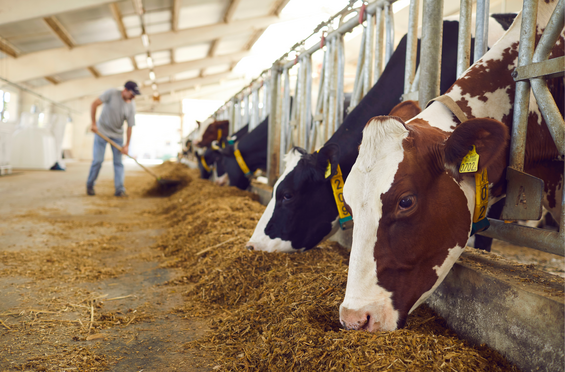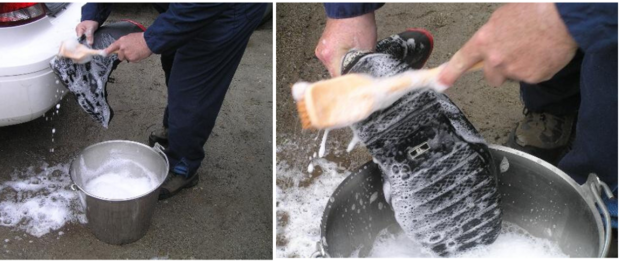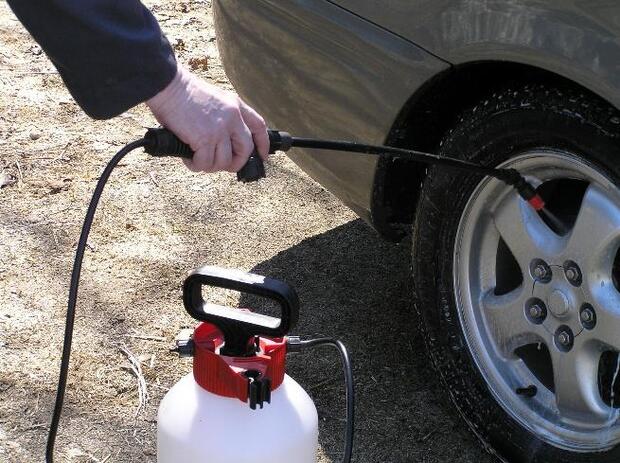HPAI Background
Since December 2021, Highly Pathogenic Avian Influenza (HPAI) has been detected across the country in wild water birds, domestic birds, or both. In spring of 2024, dairy cattle in Texas were identified as having been infected with HPAI (H5N1). Movements of cattle, shared equipment, vehicles, and personnel spread the virus, and HPAI infections in domestic livestock have been found in 16 states. Routes of transmission in cattle are still being investigated. In late January 2025, a second “spillover” event occurred, and HPAI was found in Nevada dairy cattle.
Since August of 2024, Massachusetts dairy farms have been undergoing monthly milk testing. At this time, HPAI has not been detected in Massachusetts milk. How HPAI “spilled over” from wild birds into cattle is unclear.
Poultry are highly susceptible to all strains of the HPAI virus and can become infected from contact with infected cattle, infected wild birds, and/or virus-contaminated surfaces.
Infections
Avian influenza can affect wild or domestic birds and mammals. Most poultry die within days of exposure to HPAI. Wild and domestic ducks and some other species may be infected without ever appearing sick. Domestic poultry are exposed to HPAI through contact with infected birds, their droppings, or feathers. Pastures, yards, ponds, and equipment easily become contaminated with the HPAI virus.
Humans have become infected with HPAI virus in the US. Most of these humans had substantial close contact with infected poultry or dairy cows, and most infections have been mild.
Mammals that consume infected birds, carcasses, or infected raw (unpasteurized) milk may contract the disease.
Common Sense Biosecurity Measures
Use good biosecurity practices at your facility to protect your cattle and poultry from the virus. This means taking steps to reduce the chances of infectious disease being carried onto or off of your farm.
Employees and Visitors
- All caretakers should follow all biosecurity plans for your herd every time they enter animal areas.
- Humans can inadvertently move HPAI virus into contact with domestic birds or dairy cattle through use of contaminated equipment, clothing and footwear, and vehicle tires.
- Prevent visitors from accessing pens or animal areas.
- Do not visit other dairy or poultry facilities.
- Wear separate, dedicated clothing and shoes when working with your animals.
- Do not enter animal areas or handle your animals or equipment after hunting, fishing, or coming in contact with wild birds or areas that wild birds frequent until you have, at a minimum washed your hands, changed clothing, and cleaned and disinfected footwear.
- Clean then disinfect your boots. Use a bucket with a secure lid and long handled brush to scrub footwear clean, then step through a disinfectant foot bath before entering animal areas.
- Many disinfectants inactivate influenza viruses. Be sure your disinfectants are on the EPA’s list: EPA’s Registered Antimicrobial Products Effective Against Avian Influenza
- Some disinfectants, like bleach and quaternary ammonium compounds are quickly inactivated by manure, dirt, and other “organic material” that may be found on boots. Accelerated hydrogen peroxide (Accel, Intervention, Oxivir, etc.), peracetic acid (Peridox, Vortexx, etc.), and peroxymonosulfate (Virkon S) disinfectants are more effective in the presence of organic material and may be better suited for use in a foot bath. All disinfectants work best on visibly clean surfaces. This is why cleaning your boots prior to applying disinfectant is important.
Make sure you clean and disinfect your boots thoroughly before entering animal areas.
Equipment
- Do not share equipment, supplies, vehicles, or employees with other farms.
- Clean and disinfect all equipment, shoes, clothing, and vehicles before entering animal areas.
- Remove dirt and manure from surfaces before disinfection. “You can't clean dirt.”
Animals
- Keep your animals in a safe environment and house different species separately. House poultry in a secure location away from cattle. Do not allow poultry to comingle with cattle.
- Isolate new animals that arrive at the farm, ideally for 30 days. This means the new animals should have no contact with the resident herd and should be fed, handled, and milked last. Treat animals returning from shows or fairs as if they were new arrivals.
- Know the sources of any new animals.
- House sick animals separately and provide care for them last. Ideally, a separate person should care for sick animals. Sick animals should receive timely veterinary care.
- Keep insects and animals like pets, rodents, and wild animals, including wild birds, out of the animal areas, feed bunks, and feed storage areas. Store feed securely and clean up spilled feed promptly to prevent attracting wild birds, rodents, and pests. Do not feed spilled grain from an outdoor area. Throw it away!
- Since circumstances surrounding initial disease spillover into cattle is unclear, prevent access to creeks, ponds, and other surface water that could be contaminated with wild bird droppings.
- Do not feed raw milk to cats.
Consider establishing a tire wash
Farm Traffic
- Milk trucks and feed delivery vehicles should not drive through or into areas where animal traffic occurs.
- Drivers should not enter animal areas and should limit their work to their essential tasks.
- Keep people and vehicles involved with cull animal movements away from your main herd. Work with the dealer to have farm employees move animals towards the trailers and dealer personnel finish loading.
- Consider establishing a tire wash for vehicles that must enter the farm.

Watch for Signs of Disease
Know the signs of avian influenza in cattle. Early detection helps prevent the spread of disease.
- Abnormal looking milk (thick, off-color, colostrum looking)
- Decreased milk production
- Decrease in water or feed consumption
- Respiratory signs such as sneezing coughing gasping for air and or runny nose
- Lack of energy or unusually quiet
If you suspect HPAI in cattle or poultry report immediately to MDAR or USDA!
Do not move any animals on or off your premises.
- MDAR: Mass. Dept. of Agricultural Resources, Division of Animal Health: 617-626-1795
- Cattle: Reportable Animal Diseases
- Poultry: Poultry Disease Reporting Form
- USDA: US Department of Agriculture: 866-536-7593
- Report wild bird die off to the Mass. Dept. of Fish and Game, Division of Fisheries and Wildlife (MassWildlife) using this online form Report observations of dead wild birds

